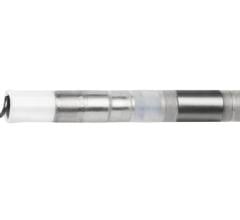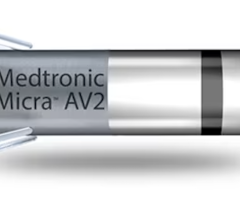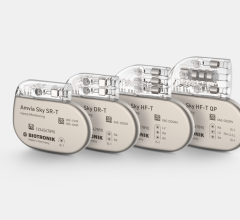
July 25, 2013 — The 2013 ESC (European Society of Cardiology) Guidelines on Cardiac Pacing and Cardiac Resynchronization Therapy, developed in collaboration with the European Heart Rhythm Association (EHRA), have created a new classification system for bradyarrhythmias according to mechanisms rather than aetiology. The guidelines, presented at the EHRA Europace meeting in Athens, Greece, and published simultaneously in the European Heart Journal and Europace, have been redesigned to offer a more accessible format for users. Greater emphasis has been placed on a practical "how-to" approach targeted at generalists, including GPs and geriatricians, as well as expert cardiologists and electrophysiologists.
"By taking this user-friendly approach we hope to get our messages out to the wider medical community, which ultimately should allow more patients to benefit from the latest evidence-based medicine," said Michele Brignole of Ospedali del Tigullio, Italy, chairperson of the Guidelines on Cardiac Pacing and Cardiac Resynchronization Therapy Task Force.
The 2013 guidelines, revised for the first time since 2007, were developed with input from 70 clinicians, including an expert task force of 18 cardiologists specializing in cardiac pacing and resynchronization, and further 26 experts in the field who reviewed the document, with the entire process overseen by the ESC Committee for Practice Guidelines (CPG).
The first part of the guidelines explores indications for pacing in patients who have cardiac arrhythmias. The second part looks at indications for cardiac resynchronization therapy (CRT) in heart failure. The third part includes indications for pacing in specific conditions, such as acute myocardial infarction (MI), pacing after cardiac surgery, TAVI (transcatheter aortic valve implantation) and heart transplantation, and pacing in children and individuals with congenital heart diseases. Finally, the guidelines explore management considerations such as re-implantation after device explanation for infection, MRI (magnetic resonance imaging) in patients with implanted cardiac devices, emergency (transvenous) temporary pacing and remote management of arrhythmias and devices.
The new ESC guidelines take into account whether the patient has a persistent problem, or whether it is intermittent, and whether it has been documented with electrocardiographic evidence (ECG-documented) or not (ECG-undocumented). Until now, guidelines have classified bradyarrhythmias according to aetiology; for example whether the problem has been caused by sinus node dysfunction, MI or bundle branch block.
"One of the big innovations of these guidelines is the development of a logical decision tree displaying the different pacing modes according to different clinical situations. In effect these guidelines take the clinician by the hand and lead them through a series of three or four questions," explained committee member Perry Elliott from The Heart Hospital in London.
In areas where evidence is open to more than one interpretation, the guidelines provide information to help clinicians make a decision. For example, in patients with heart failure and poorly controlled symptoms, where choices have to be made between CRT pacemakers and CRT defibrillators, trials have had little to add to the decision-making process. "Clinicians have to consider factors such as expected life expectancy and co-morbidities when choosing between pacemaker and defibrillator therapy,” said Elliott.
The guidelines are the first ESC guidelines to incorporate a new section called Clinical Perspectives. "This section gives advice on how to apply guidelines in real-life clinical situations, taking into account things like what to do when patients have co-morbidities or are taking concomitant drugs," said Brignole.
For more information: www.escardio.org


 March 26, 2024
March 26, 2024 








